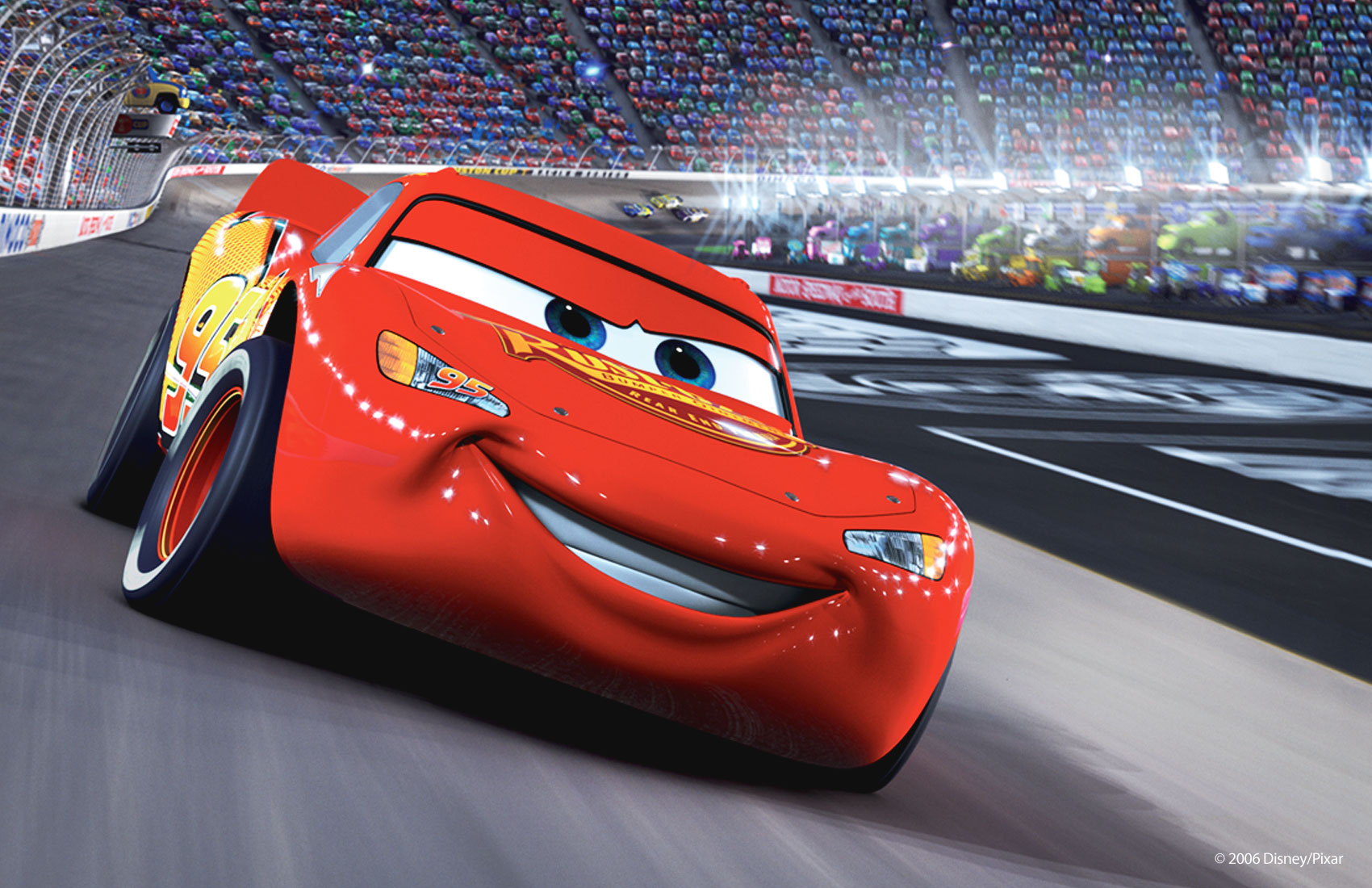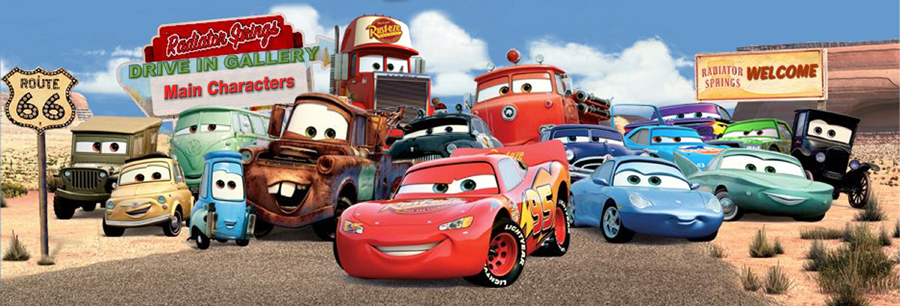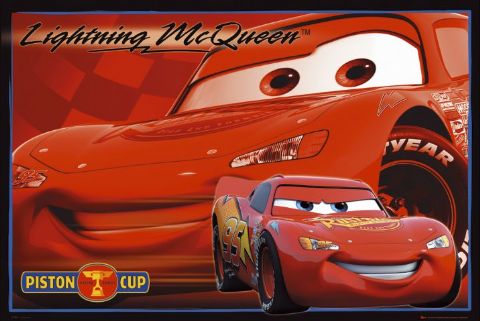Disney Pixar Cars Biography
Pixar was founded as The Graphics Group, which is one third of the Computer Division of Lucasfilm that was launched in 1979 with the hiring of Dr. Ed Catmull from the New York Institute of Technology (NYIT),[5] where he was in charge of the Computer Graphics Lab (CGL). At NYIT, the researchers pioneered many of the CG foundation techniques -- in particular the invention of the "alpha channel" (by Catmull and Alvy Ray Smith); years later the CGL produced an experimental film called The Works. After moving to Lucasfilm, the team worked on creating the precursor to RenderMan, called REYES (for "renders everything you ever saw"); and developed a number of critical technologies for CG - including "particle effects" and various animation tools.
In 1982 the team began working on film sequences with Industrial Light & Magic on special effects.[5] After years of research, and key milestones in films such as the Genesis Effect in Star Trek II: The Wrath of Khan and the Stained Glass Knight in Young Sherlock Holmes,[5] the group, which numbered about 45 individuals back then,[6] was purchased in Feb 1986 by Steve Jobs shortly after he left Apple Computer.[7] Jobs paid $5 million to George Lucas and put $5 million as capital into the company.[8][9][10] A factor contributing to Lucas' sale was an increase in cash flow difficulties following his 1983 divorce, which coincided with the sudden dropoff in revenues from Star Wars licenses following the release of Return of the Jedi The newly independent company was headed by Jobs, who served as Chairman and Chief Executive Officer of Pixar. Dr. Edwin Catmull served as Chief Technology Officer[11] and Dr. Alvy Ray Smith as Executive Vice President and Director.[12] In 2001, Edwin Catmull was named President of Pixar.[13]
Initially, Pixar was a high-end computer hardware company whose core product was the Pixar Image Computer, a system primarily sold to government agencies and the medical community. One of the buyers of Pixar Image Computers was Disney Studios, which was using the device as part of their secretive CAPS project, using the machine and custom software to migrate the laborious ink and paint part of the 2-D animation process to a more automated and thus efficient method. The Image Computer never sold well.[14] In a bid to drive sales of the system, Pixar employee John Lasseter—who had long been creating short demonstration animations, such as Luxo Jr., to show off the device's capabilities—premiered his creations at SIGGRAPH, the computer graphics industry's largest convention, to great fanfare.[14]
As poor sales of Pixar's computers threatened to put the company out of business, Lasseter's animation department began producing computer-animated commercials for outside companies. Early successes included campaigns for Tropicana, Listerine, Life Savers and Terminator 2: Judgment Day.[15] In April 1990 Jobs sold Pixar's hardware division, including all proprietary hardware technology and imaging software, to Vicom Systems, and transferred 18 of Pixar's approximate 100 employees. The same year Pixar moved from San Rafael to Richmond, California.[16] During this period, Pixar continued its relationship with Walt Disney Feature Animation, a studio whose corporate parent would ultimately become its most important partner. In 1991, after a tough start of the year when about 30 employees in the company's computer department had to go (including the company's president, Chuck Kolstad),[17] which reduced the total number of employees to just 42,[18] Pixar made a $26 million deal with Disney to produce three computer-animated feature films, the first of which was Toy Story. At that point, the software programmers, who were doing RenderMan and CAPS, and Lasseter’s animation department, who made television commercials and a few shorts for Sesame Street, was all that was left of Pixar.[19]
William Reeves, CTE at Pixar, on rendering algorithms, raytracing and global illumination, 1995, after the release of Toy Story.
Despite the total income of these products, the company was still losing money, and Jobs often considered selling it. Even as late as 1994, Jobs contemplated selling Pixar to other companies, among them Microsoft. Only after confirming that Disney would distribute Toy Story for the 1995 holiday season did he decide to give it another chance.[20] The film went on to gross more than $350 million worldwide.[21] Later that year, Pixar held its initial public offering on November 29, 1995, and the company's stock was priced at US$22 per share.








Pixar was founded as The Graphics Group, which is one third of the Computer Division of Lucasfilm that was launched in 1979 with the hiring of Dr. Ed Catmull from the New York Institute of Technology (NYIT),[5] where he was in charge of the Computer Graphics Lab (CGL). At NYIT, the researchers pioneered many of the CG foundation techniques -- in particular the invention of the "alpha channel" (by Catmull and Alvy Ray Smith); years later the CGL produced an experimental film called The Works. After moving to Lucasfilm, the team worked on creating the precursor to RenderMan, called REYES (for "renders everything you ever saw"); and developed a number of critical technologies for CG - including "particle effects" and various animation tools.
In 1982 the team began working on film sequences with Industrial Light & Magic on special effects.[5] After years of research, and key milestones in films such as the Genesis Effect in Star Trek II: The Wrath of Khan and the Stained Glass Knight in Young Sherlock Holmes,[5] the group, which numbered about 45 individuals back then,[6] was purchased in Feb 1986 by Steve Jobs shortly after he left Apple Computer.[7] Jobs paid $5 million to George Lucas and put $5 million as capital into the company.[8][9][10] A factor contributing to Lucas' sale was an increase in cash flow difficulties following his 1983 divorce, which coincided with the sudden dropoff in revenues from Star Wars licenses following the release of Return of the Jedi The newly independent company was headed by Jobs, who served as Chairman and Chief Executive Officer of Pixar. Dr. Edwin Catmull served as Chief Technology Officer[11] and Dr. Alvy Ray Smith as Executive Vice President and Director.[12] In 2001, Edwin Catmull was named President of Pixar.[13]
Initially, Pixar was a high-end computer hardware company whose core product was the Pixar Image Computer, a system primarily sold to government agencies and the medical community. One of the buyers of Pixar Image Computers was Disney Studios, which was using the device as part of their secretive CAPS project, using the machine and custom software to migrate the laborious ink and paint part of the 2-D animation process to a more automated and thus efficient method. The Image Computer never sold well.[14] In a bid to drive sales of the system, Pixar employee John Lasseter—who had long been creating short demonstration animations, such as Luxo Jr., to show off the device's capabilities—premiered his creations at SIGGRAPH, the computer graphics industry's largest convention, to great fanfare.[14]
As poor sales of Pixar's computers threatened to put the company out of business, Lasseter's animation department began producing computer-animated commercials for outside companies. Early successes included campaigns for Tropicana, Listerine, Life Savers and Terminator 2: Judgment Day.[15] In April 1990 Jobs sold Pixar's hardware division, including all proprietary hardware technology and imaging software, to Vicom Systems, and transferred 18 of Pixar's approximate 100 employees. The same year Pixar moved from San Rafael to Richmond, California.[16] During this period, Pixar continued its relationship with Walt Disney Feature Animation, a studio whose corporate parent would ultimately become its most important partner. In 1991, after a tough start of the year when about 30 employees in the company's computer department had to go (including the company's president, Chuck Kolstad),[17] which reduced the total number of employees to just 42,[18] Pixar made a $26 million deal with Disney to produce three computer-animated feature films, the first of which was Toy Story. At that point, the software programmers, who were doing RenderMan and CAPS, and Lasseter’s animation department, who made television commercials and a few shorts for Sesame Street, was all that was left of Pixar.[19]
William Reeves, CTE at Pixar, on rendering algorithms, raytracing and global illumination, 1995, after the release of Toy Story.
Despite the total income of these products, the company was still losing money, and Jobs often considered selling it. Even as late as 1994, Jobs contemplated selling Pixar to other companies, among them Microsoft. Only after confirming that Disney would distribute Toy Story for the 1995 holiday season did he decide to give it another chance.[20] The film went on to gross more than $350 million worldwide.[21] Later that year, Pixar held its initial public offering on November 29, 1995, and the company's stock was priced at US$22 per share.
Disney Pixar Cars

Disney Pixar Cars

Disney Pixar Cars

Disney Pixar Cars

Disney Pixar Cars

Disney Pixar Cars

Disney Pixar Cars

Disney Pixar Cars

Disney Pixar Cars
Disney Pixar Cars - Xbox 360 - Tried To Play This One Again.
Disney Pixar Cars 2 Years Before